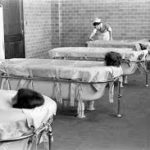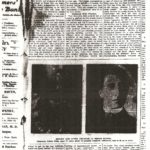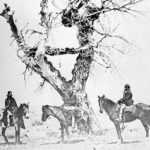Most patients, of course, did not want to be in an asylum, and moving into one very likely added to whatever problem that had brought them there. Doctors’ management of their conditions may or may not have alleviated their distress (see last post), since much of the available medication in the 1800s and early 1900s had undesirable or unpleasant side effects.
Living in a strange home with people one didn’t know, would have disturbed most people–sane or insane. Rigid routines added to patients’ stress, as did some of the more extreme medical interventions. However, another factor, though more subtle, was just as distasteful. Asylums were often tourist attractions, and visitors usually wanted to see patients as well as the grounds and structures of the institutions they visited.
The Cedar Falls Daily News reported in 1912 that Edith Baskins and her aunt had visited the “Indian Insane asylum” in Canton, S.D., “the only institution of its kind in the world.” In 1929, The Gazette in Sumner, Iowa reported that Mr. and Mrs. Fred Treloar had visited the “Indian insane asylum” in Canton. There is no definitive date on which asylums across the country stopped allowing tourists to visit, but the Canton Asylum for Insane Indians always had a “draw” as the “only institution of its kind in the world.” Its special patient population attracted local schools and medical students as well as the casual visitor.
Being on display would have been humiliating for any patient, but Native Americans had a great sense of privacy and protected personal space. To be stared at was insulting on a cultural level, and allowing it only underscores the insensitivity of the asylum’s administrators.








